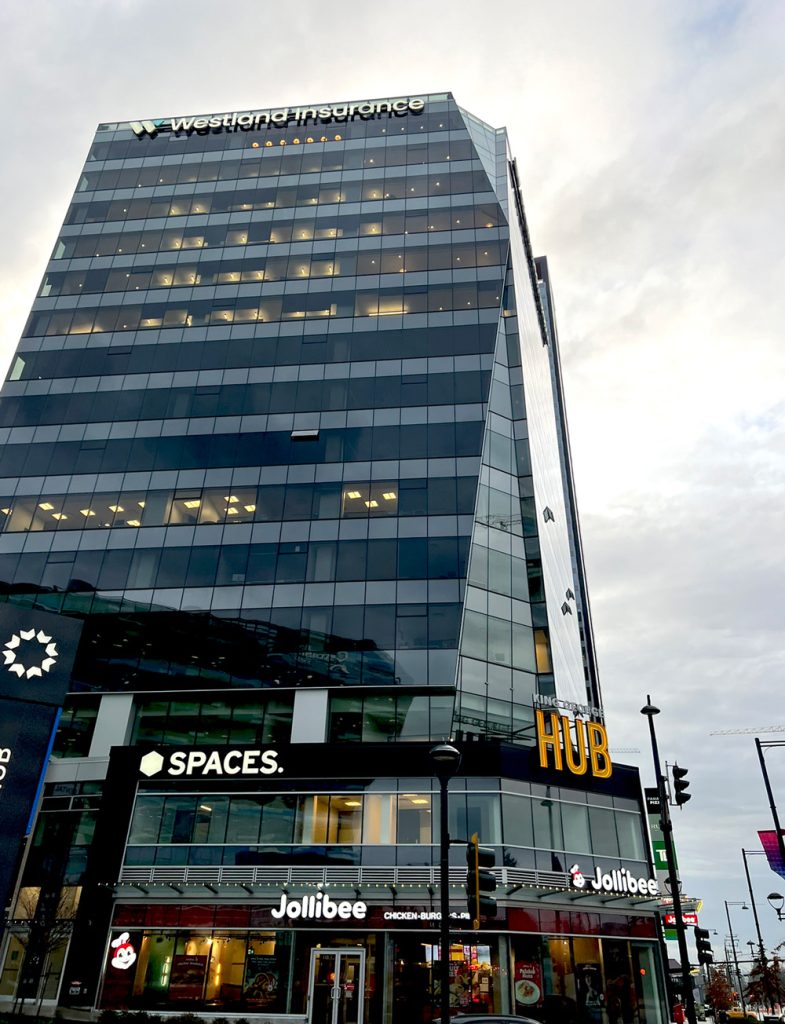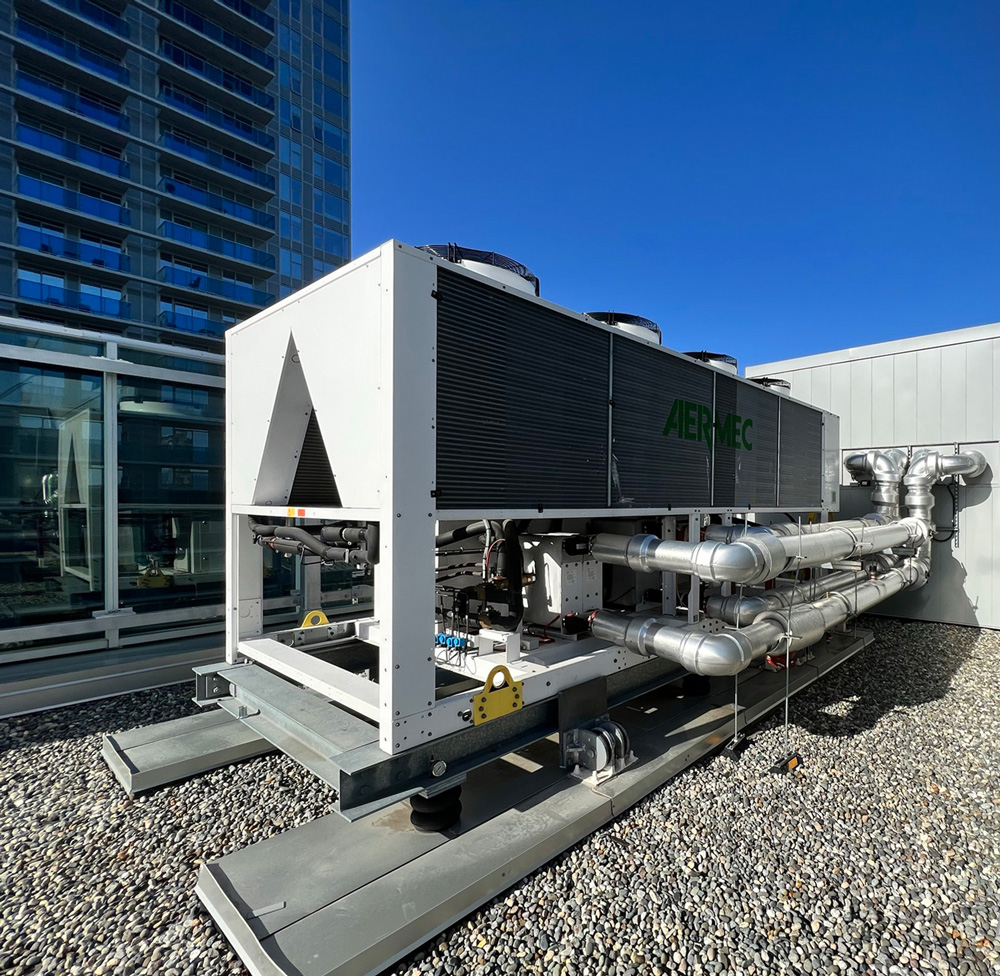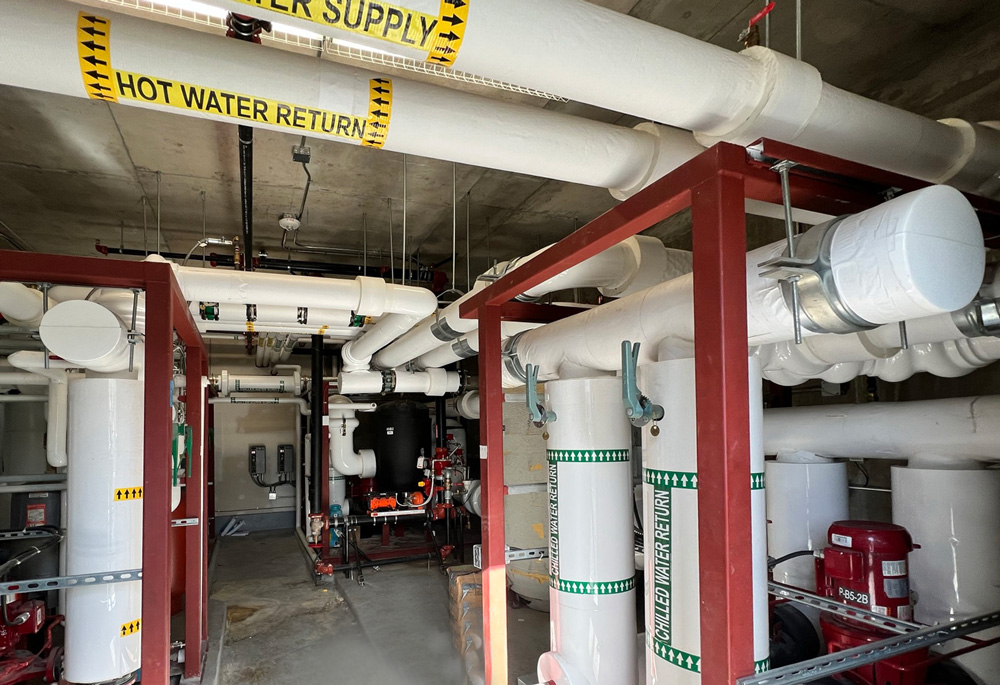Client
Warrington PCI Management
Location
Surrey, BC
Service Areas
 In 2023, Warrington PCI Management contacted Prism Engineering to conduct a recommissioning study at 9850 King George Boulevard, funded by BC Hydro through the Continuous Optimization program (C-Op). The building’s high efficiency HVAC systems were never commissioned properly, which caused the facility to be reliant on boiler heating from Surrey’s District Energy System (DES). Prism identified controls redesign opportunities that helped retro-commissioning (first commissioning) the mechanical systems and integrate them properly.
In 2023, Warrington PCI Management contacted Prism Engineering to conduct a recommissioning study at 9850 King George Boulevard, funded by BC Hydro through the Continuous Optimization program (C-Op). The building’s high efficiency HVAC systems were never commissioned properly, which caused the facility to be reliant on boiler heating from Surrey’s District Energy System (DES). Prism identified controls redesign opportunities that helped retro-commissioning (first commissioning) the mechanical systems and integrate them properly.
Upon investigation phase completion, Prism provided engineering services to support the implementation of strategic controls to ensure the heat pump operates reliably and consistently year-round, utilizing heat recovery operation to minimize supplemental heating from the gas fired DES. The project focused on controls upgrades to improve chiller reliability and reduce maintenance costs, and improve energy efficiency, while stabilizing system operation. GHG emissions were significantly reduced, with implemented measures projected to deliver an 84% reduction in annual fuel costs and a decrease of 208 tCO2e in GHG emissions each year.
Challenge
High-performance design, underperforming system
Warrington PCI Management is a Vancouver-based real estate company with over 30 years of experience in commercial and residential property management. 9850 King George Boulevard is a 15-storey office tower constructed in 2021 in Surrey, BC. It is a LEED Gold-certified building with 137,000 square feet.
The building system was originally designed with a 4-pipe heat pump system, capable of providing simultaneous heating and cooling. However, the facility’s heat pump system was never adequately commissioned, leading to frequent short cycling and mode switching of the heat pump. This resulted in frequent downtime, premature refrigeration circuit failures and reliance on the gas fired DES for heating.
Control issues with the heat pump system
 Prism identified key control strategies and hardware modifications that would allow the 4-pipe heat pump to operate more effectively, thereby reducing the majority of the site’s GHG emissions. We were retained to implement the control upgrade, provide detailed specifications, and project management, including coordinating and commissioning the integration between the heat pump manufacturer controls and the building control system provider.
Prism identified key control strategies and hardware modifications that would allow the 4-pipe heat pump to operate more effectively, thereby reducing the majority of the site’s GHG emissions. We were retained to implement the control upgrade, provide detailed specifications, and project management, including coordinating and commissioning the integration between the heat pump manufacturer controls and the building control system provider.
The 4-pipe heat pump utilized onboard controllers that were ineffective in operating the unit in varying heat recovery loads conditions expected in an office building. The imbalanced heating and cooling loads at the site caused frequent mode switching and short cycling, which often locked the unit out.
This led to significant downtime for the unit and energy-intensive knock-on effects, such as:
- Large chilled and hot water temperature swings.
- Unnecessary boiler (DES) heating leading to high energy use and heating costs.
- Premature equipment failures and increased maintenance costs due to compressor and refrigeration short cycling.
Solution
Optimized controls for stable heat recovery operation

Prism recommended upgrading the onboard heat pump controls and sequencing the unit to maximize its heat recovery potential. We worked with the manufacturer to design and implement new control strategies from a standalone configuration to a hybrid one, including utilizing direct digital control (DDC) outputs to manipulate and impose operational limits that will stabilize the heat pump output in recovery mode.
The DDC can manipulate the heat pump cooling and heating capacity limits to prioritize heat recovery and “lock” the unit in a designated mode, which eliminates mode switching and reduces compressor starts. Untapped heating sources, such as the electrical room, are used to increase heat recovery potential during the heating season. This revised control strategy nearly eliminates the need for supplementary heating from the boiler.
Other opportunities were also found to reduce excess ventilation airflow while improving air quality.
Outcome
Significant energy savings and emissions reduction
The implementation measures are projected to deliver an 84% reduction in annual DES hot water use, equivalent to 208 tCO2e reduction in greenhouse gas (GHG) emissions each year. Since the project was only completed in April 2025, a full year of performance data is not yet available. However, early results already demonstrate the impact: a 61% reduction in hot water consumption (ekWh) and a 45% decrease in hot water costs. These partial results confirm the effectiveness of the new control strategies in driving meaningful energy efficiency gains. Savings are expected to significantly increase over the heating season.
Award-winning results
The innovative approach and potential outcomes of this project earned Prism Engineering First Place in the 2024–25 ASHRAE BC Technology Awards recognizing our leadership in advancing energy-efficient, low-carbon building solutions.